Electric generators play a vital role in our daily lives, often without us realizing it. From powering our homes during outages to keeping essential services running, these devices are indispensable in modern society. At ROS Electric, we’ve seen countless examples of portable electric generators in everyday life, from construction sites to camping trips. In this post, we’ll explore the various types of generators and their common applications, helping you understand their importance and how to choose the right one for your needs.
Portable Generators: Power on the Go
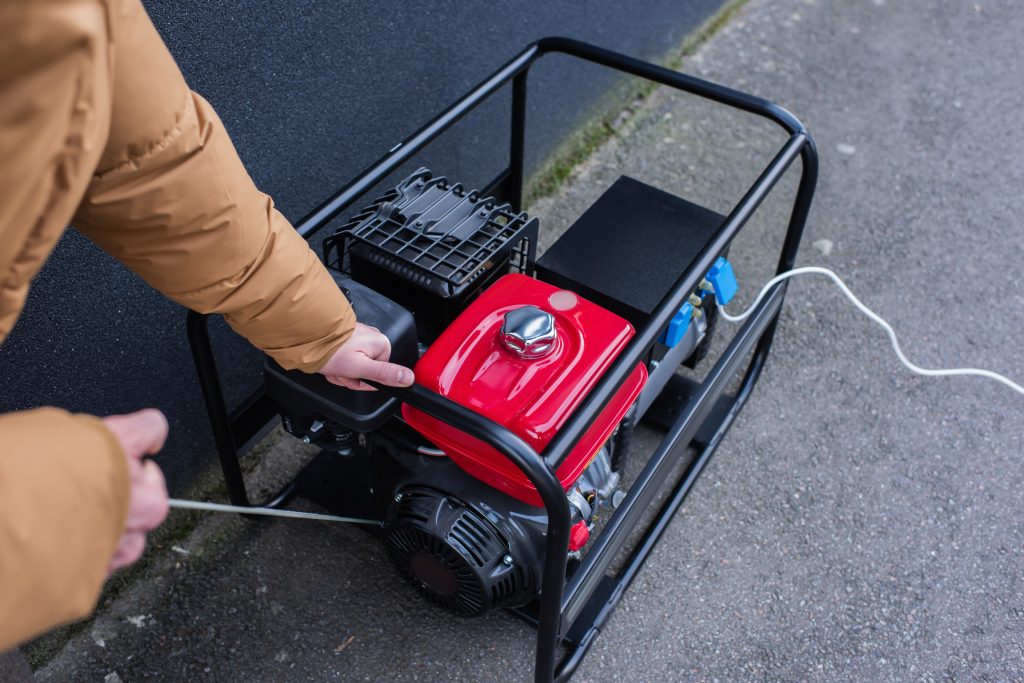
Portable generators provide versatile power solutions for various scenarios. These compact units keep us connected and productive in diverse situations. Let’s explore their common applications and benefits.
Construction Site Powerhouses
At construction sites, portable generators prove indispensable. They power heavy machinery and smaller tools, ensuring work continues even in areas without grid access. A typical 5000-watt portable generator can power two appliances using the full 15 amps that most electrical outlets support, as well as one appliance using 11 amps or less, which significantly boosts on-site efficiency.
Emergency Backup During Outages
When storms or grid failures strike, portable generators become lifelines. A 7500-watt unit can power essential home appliances like refrigerators, sump pumps, and heating systems. The U.S. Department of Energy reports that the average American home uses about 30 kilowatt-hours of electricity daily. A well-sized portable generator can cover a significant portion of this demand during short-term outages.
Enhancing Outdoor Adventures
Camping and outdoor events benefit greatly from portable generators. A quiet 2000-watt inverter generator can run small appliances, charge devices, and even power a small TV, enhancing the camping experience without disturbing the peace. The Outdoor Industry Association notes that the outdoor recreation participant base grew 2.3 percent in 2022 to a record 168.1 million participants or 55 percent of the U.S. population ages six and older, highlighting the increasing demand for portable power solutions in outdoor settings.
RV and Mobile Home Energy Solutions

For RV enthusiasts and mobile home dwellers, portable generators are essential. A 3000-watt generator can power air conditioning units, microwaves, and other comforts of home while on the road. The RV Industry Association reports that RV shipments increased by 39.2% in 2021 (indicating a growing market for reliable, portable power sources).
Portable generators offer flexibility and independence across various scenarios. They keep job sites running, maintain comfort during power outages, and enhance outdoor experiences. As technology advances, more fuel-efficient and quieter models enter the market, making portable generators an even more attractive solution for on-the-go power needs.
Standby Generators: Your Home and Business Power Shield
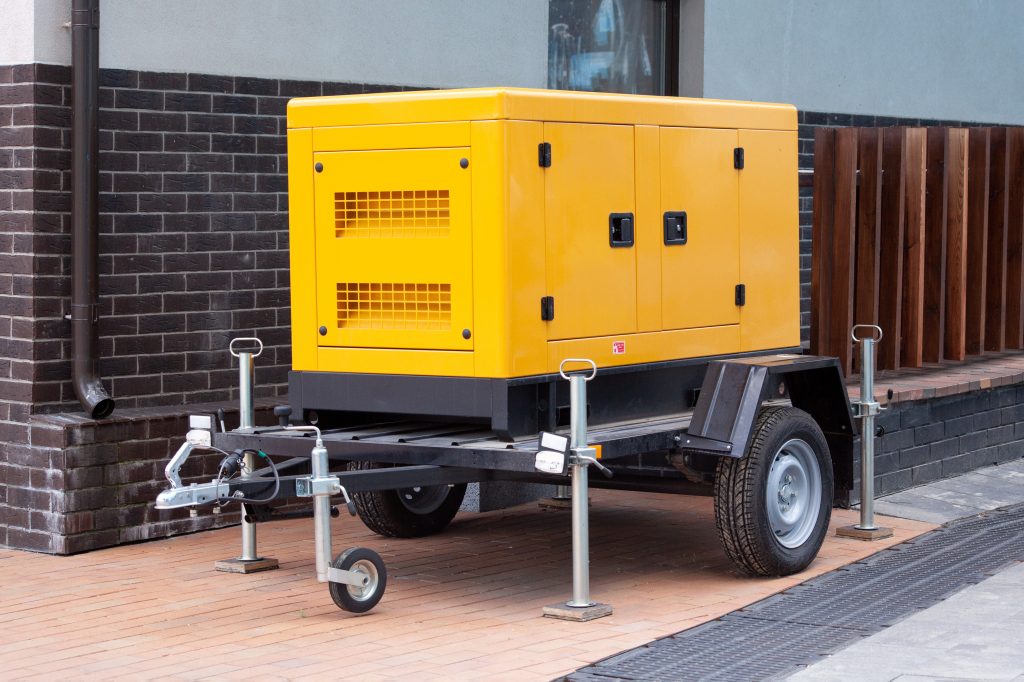
Automatic Power Transition
Standby generators have become a popular choice for homeowners and businesses seeking reliable power solutions during grid failures. These robust units automatically activate when the main power supply fails, ensuring uninterrupted operation of critical systems and appliances. Modern standby generators feature automatic transfer switches that detect power outages within seconds. An automatic transfer switch (ATS) is a self-acting, intelligent power-switching device governed by dedicated control logic. This technology allows for a quick transition from grid power to generator power, which minimizes downtime and potential damage to sensitive equipment. The average U.S. home experiences 1.3 power interruptions per year, lasting about 4 hours each (according to the Electric Power Research Institute). A standby generator can eliminate these disruptions entirely.
Safeguarding Essential Systems
For homeowners, standby generators protect essential appliances like refrigerators, HVAC systems, and medical equipment. In businesses, they keep computers, servers, and production lines operational. A 2018 survey found that one in four companies experience a power outage at least once a month. These outages are not mild inconveniences – the costs are significant. An investment in a standby generator can significantly reduce these financial risks.
Selecting the Right Size and Fuel
The selection of the appropriate size and fuel type for a standby generator is essential. For residential use, generators typically range from 7 to 22 kilowatts, while commercial units can exceed 150 kilowatts. Natural gas is a popular fuel choice due to its continuous supply, but propane and diesel options are also available. The U.S. Energy Information Administration projects that natural gas prices will remain relatively stable, which makes it a cost-effective long-term option for many users.
Installation Trends and Considerations
A growing trend in standby generator installations has emerged, particularly in areas prone to severe weather events. Proper sizing not only guarantees sufficient power but also prevents unnecessary fuel consumption and wear on the generator. The assessment of power needs and recommendation of appropriately sized units ensures optimal performance and longevity.
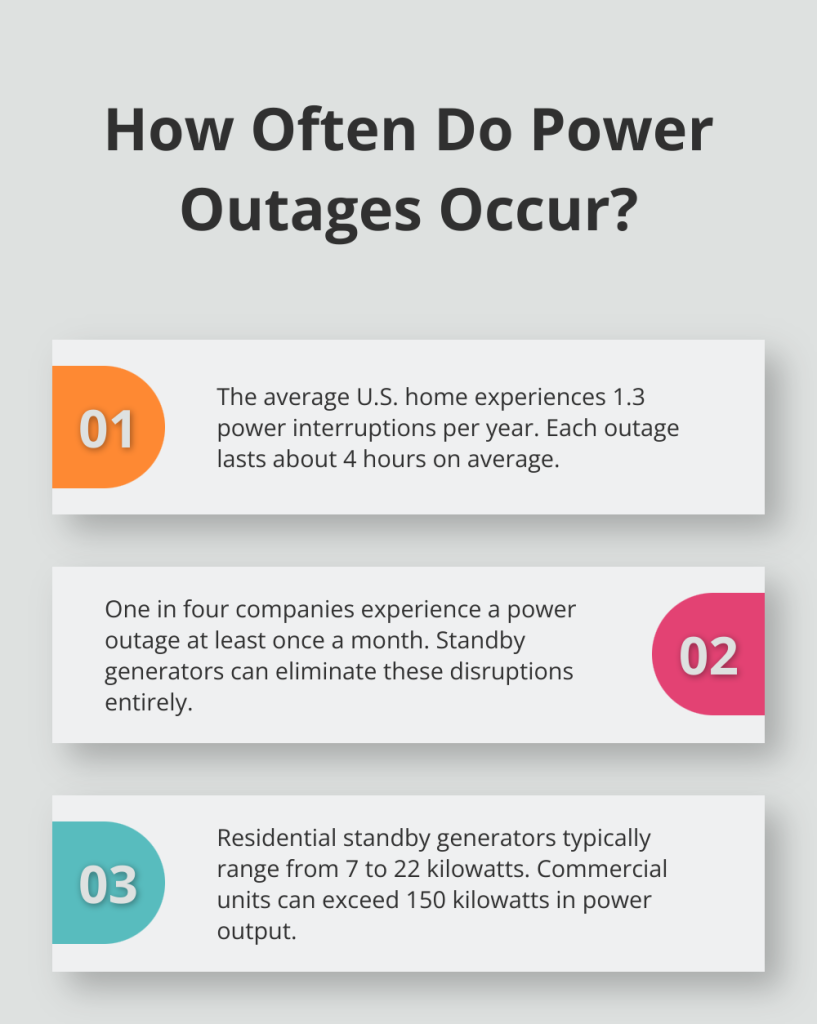
Powering Critical Infrastructure: Industrial and Commercial Generators
Industrial and commercial generators form the backbone of our modern infrastructure. These robust power solutions ensure uninterrupted power supply to critical facilities and large-scale operations. They play a pivotal role in maintaining essential services and driving economic activities.
Data Centers and Telecommunications
In the digital age, data centers and telecommunications facilities require constant, reliable power. A single minute of downtime can cost companies thousands of dollars. A survey conducted by the Ponemon Institute found that the average cost of a data center outage is $740,357, representing a 38% increase since 2010. Industrial generators (often ranging from 500 kW to 3 MW) provide the necessary backup power to keep these facilities operational during grid failures.
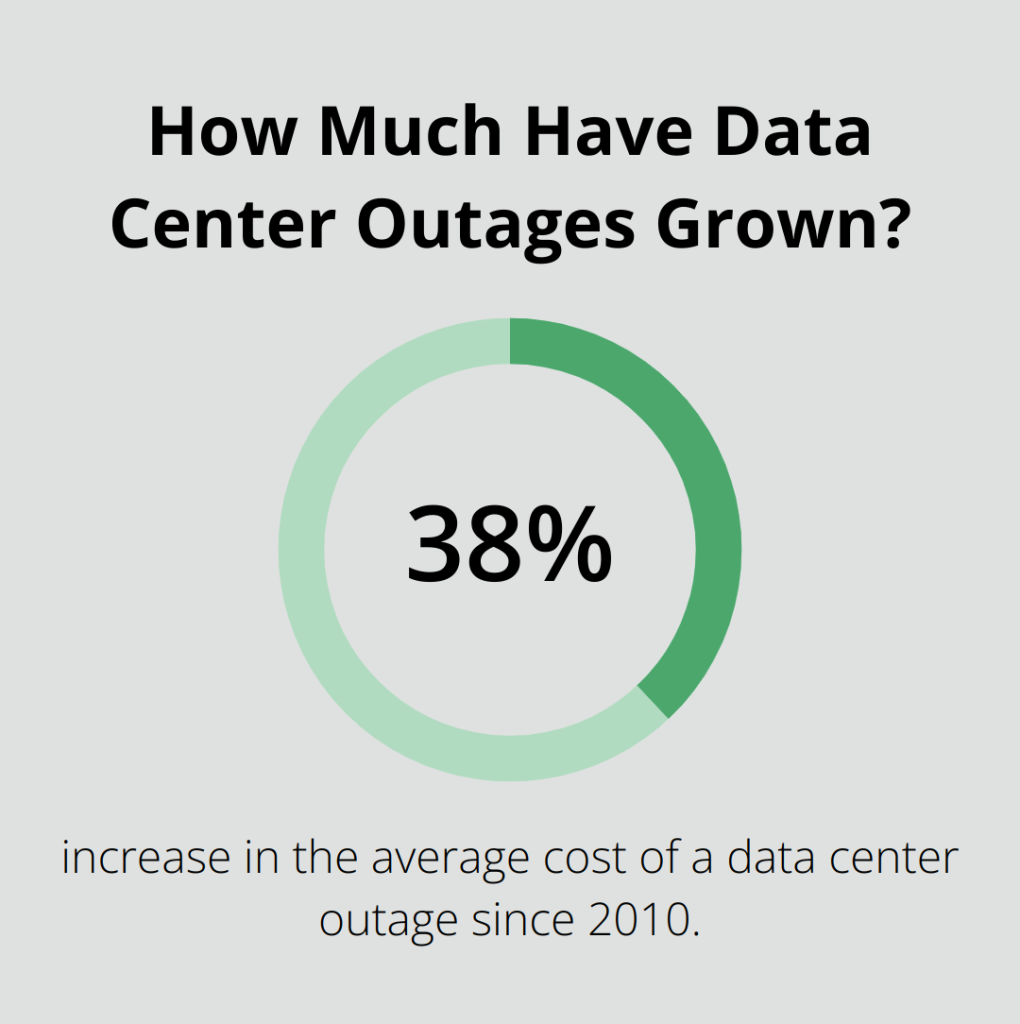
Telecommunications companies typically employ N+1 redundancy in their generator setups. This means they have one more generator than necessary to meet their power needs. This approach ensures continuous service even if one generator fails. For instance, a major telecom provider might use three 1.5 MW generators to power a facility that only requires 3 MW, providing an extra layer of reliability.
Healthcare Facilities
Hospitals and healthcare facilities rely heavily on industrial generators to maintain life-saving equipment and critical operations. The Joint Commission requires hospitals to test their emergency power systems for at least 30 continuous minutes with a minimum dynamic load of at least 30% of the nameplate rating. These stringent requirements underscore the critical nature of power reliability in healthcare settings.
A typical 500-bed hospital might require a 3 MW generator system to ensure full functionality during power outages. This capacity allows for the operation of essential equipment like ventilators, MRI machines, and surgical lights. Modern healthcare facilities often implement a tiered approach to power distribution, prioritizing critical care areas in case of extended outages.
Manufacturing and Industrial Applications
In manufacturing plants and factories, power interruptions can lead to significant production losses and safety hazards. The U.S. Department of Energy estimates that power outages cost U.S. businesses more than $150 billion annually. Industrial generators in these settings often range from 1 MW to 5 MW, depending on the facility’s size and power requirements.
A large automotive manufacturing plant might employ multiple 2 MW generators to maintain production lines, robotic systems, and safety equipment during outages. These generators are typically diesel-powered due to the fuel’s energy density and long shelf life, allowing for extended operation during prolonged power disruptions.
Large-Scale Events and Entertainment
Major events and entertainment venues require substantial temporary power solutions. The Super Bowl, for instance, typically requires about 15 MW of backup power to ensure the show goes on, regardless of grid conditions. This power not only supports the stadium itself but also broadcasting equipment and temporary structures.
Music festivals and outdoor concerts often rely on generator arrays to power sound systems, lighting rigs, and video displays. A large music festival might use a combination of 500 kW to 1 MW generators (strategically placed to distribute power efficiently across the venue).
Contact ROS Electric Today for Generator Services
At ROS Electric LLC, we provide tailored generator solutions that meet the unique needs of each client in the New Jersey area. Our team of experienced professionals specializes in generator installations, from initial assessment to installation and ongoing maintenance. Contact us to get a quote and ensure that your home or business has access to reliable power solutions.

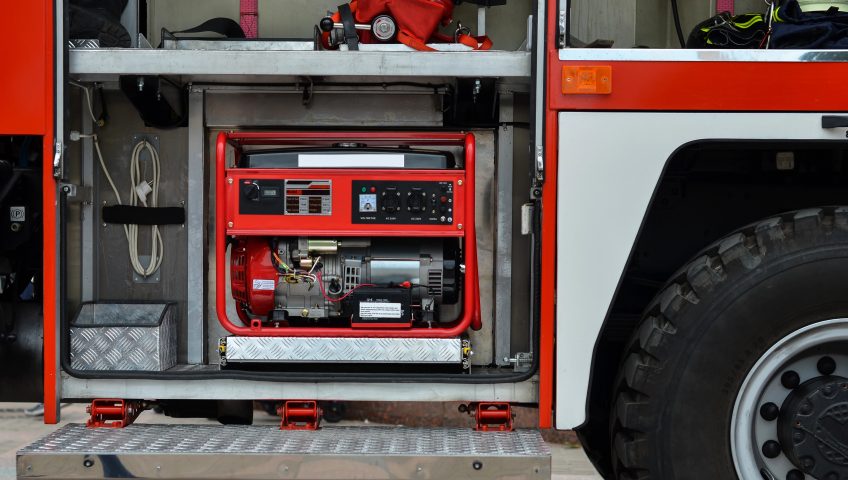
Write a Comment